What to do if PTC is not connected in Lenze 8201 DC Drives?
- CChris ReillySep 23, 2025
If the PTC is not connected in your Lenze DC Drives, connect the PTC or switch off monitoring (C0585=3).
What to do if PTC is not connected in Lenze 8201 DC Drives?
If the PTC is not connected in your Lenze DC Drives, connect the PTC or switch off monitoring (C0585=3).
What causes faulty auto-TRIP reset in Lenze 8201?
If you have a faulty auto-TRIP reset on your Lenze DC Drives, it could be due to more than 8 fault messages in 10 minutes. The solution depends on the specific fault message.
Why Lenze Inverter motor does not rotate?
If the Lenze Inverter motor isn't rotating, it could be due to several reasons: * The DC-bus voltage might be too low, in this case check the mains voltage. * The controller might be inhibited, so check the operating module. * The setpoint might be zero, so set a proper setpoint. * DC braking or the quick-stop function could be active, so disable them. * If a JOG setpoint is activated but the JOG frequency is zero, set the JOG frequency. * A fault might be indicated (refer to chapter 8.3 for fault details). * The mechanical motor brake might not be released, so release it.
What to do if Lenze Inverter shows OOV overvoltage error?
If your Lenze Inverter displays an OOV (Overvoltage) error, it could be due to: * Mains voltage being too high, check the voltage supply. * Feedback or braking operation issues. Try increasing deceleration times. If using brake choppers, check the selection and connection of the brake resistor and increase the deceleration times. * Earth leakage on the motor side. Inspect the motor cable and motor for earth faults, disconnecting the motor from the inverter to do so.
What to do if parameter transfer is faulty in Lenze DC Drives?
If you experience faulty parameter transfer via the operating module in Lenze DC Drives, and PAR1 and PAR2 are defective, it is absolutely necessary to repeat the data transfer or load the factory setting before enabling the controller.
What causes I x t overload in Lenze 8201?
If you are experiencing I x t overload with your Lenze DC Drives, it might be due to frequent and too long acceleration processes with overcurrent. In this case, check drive dimensioning.
What causes overload during deceleration in Lenze DC Drives?
If the Lenze DC Drives controller overloads during deceleration, the deceleration time might be too short. Increase the deceleration time. Also check the selection of the brake resistor or connect the brake chopper.
What causes overload during acceleration in Lenze 8201?
If the Lenze DC Drives inverter overloads during acceleration or experiences a short circuit, the acceleration time might be too short. Increase the acceleration time. Also, check the wiring for defective motor cable. Check the motor for an interturn fault.
What to do if Lenze 8201 motor does not rotate?
If your Lenze DC Drives motor isn't rotating, several factors could be at play. The DC-bus voltage might be too low, so you should check the mains voltage. The controller might be inhibited; in that case, check the display of the operating module for OFF, STOP, or AS_LC. Also, the setpoint could be zero, requiring you to modify it. DC braking or the Quick-stop function might be active, so deactivate them. If a JOG setpoint is activated with a JOG frequency of 0, set the JOG frequency to a non-zero value. Also, check the mechanical motor brake to ensure it is released.
What does EEr external fault mean on Lenze Inverter?
If your Lenze Inverter displays an EE|External fault (TRIP-Set) error, it means a digital input assigned to the TRIP-Set function has been activated. Check the external encoder.
Purpose and recommended use of the operating instructions.
Definitions of key terms used throughout the operating instructions.
Details changes and updates in the current version of the instructions.
Lists the items included in the product delivery.
Outlines relevant legal directives and compliance requirements.
States Lenze's liability regarding information and product use.
Details warranty conditions and claims process.
Provides guidance on material disposal and recycling.
Essential safety precautions for operating controllers.
Explains the structure and meaning of safety icons and signal words.
Identifies specific hazards that may remain after basic safety measures.
Lists general specifications, environmental conditions, and approvals.
Provides detailed electrical and performance ratings for different models.
Specifies fuse types and cable cross-sections for installation.
Details the physical dimensions of the controller.
Instructions for physical mounting and placement of the controller.
Describes various options for physically mounting the controller.
Details standard assembly methods using rails or angles.
Assembly dimensions and guidelines for specific controller types.
Specific mounting instructions for the reduced depth variant.
Instructions for mounting the controller on a DIN rail.
Guidelines for connecting electrical power to the controller.
Key considerations before performing electrical installation.
Instructions for connecting power to the controller.
Details on connecting the main power supply terminals.
Instructions for connecting the motor to the controller.
Lists permissible control modes based on motor cable length.
Illustrates the power wiring connections for the controller.
Guidelines for connecting control signals to the controller.
Recommendations for using and screening control cables.
Details the function of each control terminal.
Describes the use and data for analog input terminals.
Describes the use and data for analog output terminals.
Describes the use and data for digital input terminals.
Describes the use and data for relay output terminals.
Illustrates control wiring connections with internal/external voltage.
Guidelines for installing a drive system to meet CE directives.
User responsibility for EC directive compliance and EMC.
Instructions for proper assembly to ensure EMC compliance.
Guidance on using filters for EMC compliance.
Methods for screening cables to reduce radio interference.
Instructions for grounding components for EMC compliance.
A diagram showing an example EMC-compliant installation.
Pre-commissioning checks for wiring and safety.
A simplified procedure for initial setup based on factory defaults.
Step-by-step procedure for initial power-up and basic configuration.
Details default settings for key operational parameters.
Guide to adjusting parameters to match motor and application needs.
How to set minimum and maximum operating frequencies.
How to set acceleration and deceleration time constants.
How to configure the maximum current limit for protection.
Adjusting parameters for optimal motor performance.
Choosing the appropriate motor control mode (V/f).
Guidance for selecting the C014 control mode based on application.
Details on optimizing V/f control using auto boost.
Details on optimizing V/f control without auto boost (e.g., for pumps/fans).
Introduction to controller configuration for application adaptation.
Explains how to read and interpret the parameter code table.
General guide to identifying and resolving operational issues.
Explains the status indicated by controller LEDs.
Explains the status indications shown on the operating module display.
Lists possible causes for the drive not operating correctly.
How to use the history buffer to trace and analyze faults.
Details specific fault display codes, their causes, and remedies.
Procedures for resetting fault messages and restoring operation.
Lists general accessories available for all controller types.
Lists available software for controller configuration and management.
Lists accessories specific to different controller models.
Purpose and recommended use of the operating instructions.
Definitions of key terms used throughout the operating instructions.
Details changes and updates in the current version of the instructions.
Lists the items included in the product delivery.
Outlines relevant legal directives and compliance requirements.
States Lenze's liability regarding information and product use.
Details warranty conditions and claims process.
Provides guidance on material disposal and recycling.
Essential safety precautions for operating controllers.
Explains the structure and meaning of safety icons and signal words.
Identifies specific hazards that may remain after basic safety measures.
Lists general specifications, environmental conditions, and approvals.
Provides detailed electrical and performance ratings for different models.
Specifies fuse types and cable cross-sections for installation.
Details the physical dimensions of the controller.
Instructions for physical mounting and placement of the controller.
Describes various options for physically mounting the controller.
Details standard assembly methods using rails or angles.
Assembly dimensions and guidelines for specific controller types.
Specific mounting instructions for the reduced depth variant.
Instructions for mounting the controller on a DIN rail.
Guidelines for connecting electrical power to the controller.
Key considerations before performing electrical installation.
Instructions for connecting power to the controller.
Details on connecting the main power supply terminals.
Instructions for connecting the motor to the controller.
Lists permissible control modes based on motor cable length.
Illustrates the power wiring connections for the controller.
Guidelines for connecting control signals to the controller.
Recommendations for using and screening control cables.
Details the function of each control terminal.
Describes the use and data for analog input terminals.
Describes the use and data for analog output terminals.
Describes the use and data for digital input terminals.
Describes the use and data for relay output terminals.
Illustrates control wiring connections with internal/external voltage.
Guidelines for installing a drive system to meet CE directives.
User responsibility for EC directive compliance and EMC.
Instructions for proper assembly to ensure EMC compliance.
Guidance on using filters for EMC compliance.
Methods for screening cables to reduce radio interference.
Instructions for grounding components for EMC compliance.
A diagram showing an example EMC-compliant installation.
Pre-commissioning checks for wiring and safety.
A simplified procedure for initial setup based on factory defaults.
Step-by-step procedure for initial power-up and basic configuration.
Details default settings for key operational parameters.
Guide to adjusting parameters to match motor and application needs.
How to set minimum and maximum operating frequencies.
How to set acceleration and deceleration time constants.
How to configure the maximum current limit for protection.
Adjusting parameters for optimal motor performance.
Choosing the appropriate motor control mode (V/f).
Guidance for selecting the C014 control mode based on application.
Details on optimizing V/f control using auto boost.
Details on optimizing V/f control without auto boost (e.g., for pumps/fans).
Introduction to controller configuration for application adaptation.
Explains how to read and interpret the parameter code table.
General guide to identifying and resolving operational issues.
Explains the status indicated by controller LEDs.
Explains the status indications shown on the operating module display.
Lists possible causes for the drive not operating correctly.
How to use the history buffer to trace and analyze faults.
Details specific fault display codes, their causes, and remedies.
Procedures for resetting fault messages and restoring operation.
Lists general accessories available for all controller types.
Lists available software for controller configuration and management.
Lists accessories specific to different controller models.
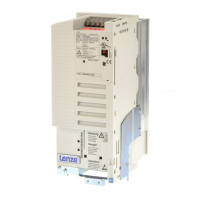




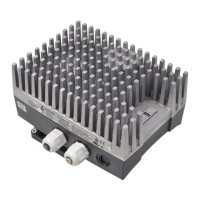
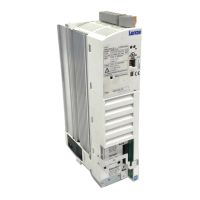
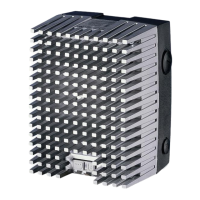
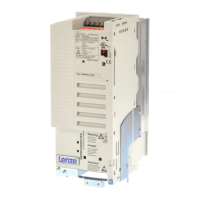
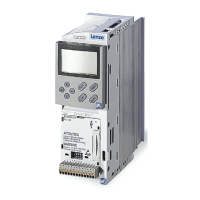
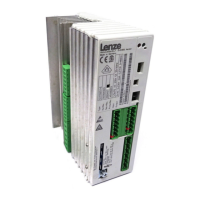
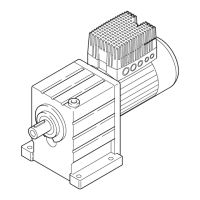
